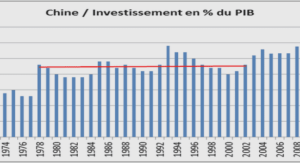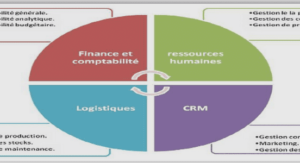Glaciers hydrology
Since there exists a large body of literature about glaciers hydrology in all regions, this section is mostly based on the reviews and “classic” works in glaciology and glacier hydrology. Also, as this project is based in a watershed where no debris-covered glaciers are observed, the review on their hydrology is not presented.
The runoff generated by glaciers is controlled by meltwater production resulting from ablation processes, water storage through accumulation, and routing of meltwater above and within the glacier system. Ablation processes, which provide water input into the system, take place at the glacier surface (supraglacial melting), within the glacier (englacial melting) and at the glacier bed (subglacial melting) (Walder & Fountain, 1998). In addition, water can be supplied to the system by external sources such as precipitation and snowmelt (Irvine-Fynn & Hodson, 2011). These different sources contribute to the total glacier runoff in different ways, supraglacial melting being a major source of water for most glacierized areas (Hock, 2005). Supraglacial melt occurs when the surface energy balance is positive and the surface is at melting point. Pronounced diurnal cyclicity of energy components, especially the radiative ones, imposes a marked diurnal variability in supraglacial melt (Jansson, Hock, & Schneider, 2003). Meltwater production reaches its peak during the day, following shortwave radiation and air temperature maxima. It reaches its minimum during the night when there is no or little energy available for melting (e.g., Klok, Nolan, & Van den Broeke, 2005). In the subarctic at the seasonal scale, most of the annual runoff is concentrated within the ablation season, when temperature and radiation are higher, and it is small during the accumulation season, when most of the precipitation is stored as snow (e.g., Huss, Bauder, & Funk, 2009; Moore & Demuth, 2001). Water can also be stored during the ablation season and it depends on the spatial distribution of the seasonal snowpack and firn layers. By storing water, snow and firn layers delay water delivery to the englacial and subglacial conduits and cavities, and tend to smooth the diurnal variations in meltwater input (Walder & Fountain, 1998). Delay times can range between several days to weeks for the firn area, and are of the order of few hours for icecovered areas (Jansson et al., 2003). Once released, water undergoes routing processes. The routing system of a clean-ice glacier can be divided into supraglacial, englacial and subglacial (Irvine‐Fynn & Hodson, 2011) .
Supraglacial channels develop on the glacier surface and drain meltwater via crevasses and moulins into the englacial and subglacial drainage system (Nienow, Sharp, & Willis, 1998). In there, water can be transported by percolation through ice (distributed or « slow » drainage system) or more efficiently by means of englacial passages (channelized or « fast » drainage system). The increasing amount of water during the ablation season augments the water pressure within the glacier and leads to widening of channels, headward channel growth as snowline retreats up-glacier, and enhanced hydro-fracturing leading to the evolution of the drainage system in the course of the melt season (Nienow et al., 1998). As a result of water routing, on a watershed scale glacier cover has a buffering effect on runoff (Fleming & Clarke, 2005; Fountain & Tangborn, 1985) with the lowest variability observed for watersheds where 40% of the area is glacierized (Walder & Fountain, 1998).
Based on the ice temperature distribution, glaciers can be classified as cold (ice temperature is below melting point), temperate (ice is at melting point) and polythermal (mixture of two). The thermal structure of a glacier depends on climate, meltwater refreezing, heat production associated with glacier dynamic processes, and geothermal heat sources (Irvine‐Fynn & Hodson, 2011). The thermal structure has important implications on glacier hydrology since unlike for temperate ice, water cannot percolate though the cold ice (Irvine‐Fynn & Hodson, 2011). As a result, the presence of cold ice will restrict water percolation to the en- and subglacial systems and thus water routing will be mainly performed via supraglacial channels (Hodgkins, Tranter, & Dowdeswell, 1997). However, for certain cold glaciers icing formation due to winter subglacial drainage was observed and explained by water stored in channels underneath the glacier (Bælum & Benn, 2011; Naegeli, Lovell, Zemp, & Benn, 2014; Wainstein, Moorman, & Whitehead, 2014), which sometimes extend to moraine complex (Moorman, 2003). In the study area glaciers are most likely polythermal (Flowers, Copland, & Schoof, 2014; Wilson, Flowers, & Mingo, 2013). Thermal regimes of two middle-size glaciers in the region were investigated and it was shown that temperate ice is located in most of the accumulation zone , and ice thickness decreases towards ablation zone (Wilson & Flowers, 2013). Temperate ice in the accumulation zone can be explained by heat production via meltwater percolation and refreezing in accumulation zones. The produced heat can eliminate cold wave close to the surface (Wilson et al., 2013). This hypothesis was supported by observations of supraglacial runoff in the ablation area (Wilson et al., 2013). Observations of subglacial streams discharging from glacier tongues suggested that glaciers are temperate in parts of the terminus area.
In cold permafrost-underlined regions, glaciers insulate the ground underneath, influencing the distribution of taliks (year-long unfrozen ground). During winter, taliks allow releasing of water stored in glaciers to the surface, which in turn can result in icing formations in an immediate proglacial field (e.g., Sobota, 2016; Woo, 2012; Yde et al., 2012). Perfect conditions for icing formation imply that water flows for some distance before it freezes and, thus, these conditions are characterized either by slightly negative temperatures or by constant high rates of discharge during winter (Moorman & Michel, 2000). Icings are defined as a mass of surface ice formed during the winter by a successive freezing of sheets of water (Carey, 1973) and are generated when water floods onto existing ice (Moorman & Michel, 2000), snow surfaces (Hodgkins, Tranter, & Dowdeswell, 2004; Moorman & Michel, 2000; Stachnik, Yde, Kondracka, Ignatiuk, & Grzesik, 2016), or flows in between existing icing layers and freeze (Moorman & Michel, 2000). Thus, icing can grow both from the bottom due to ice accretion, and from the top due to water freezing and incorporation of snow (Stachnik et al., 2016). When water freezes quickly (i.e. flow rate is equal or smaller than freezing rate), a white bubbly ice layer is formed, and when the freezing is slow – it results in a clear ice layer (Moorman & Michel, 2000). When unfrozen water gets trapped between ice layers or when there is groundwater discharge underneath the existing ice layer, blister or icing mound can be formed due to increased hydrostatic pressure resulting from the freezing of trapped water (Carey, 1973; Michel, 1986).
Glacier response to climate change
In response to the current changing climate, glaciers are declining and retreating all over the world (Bliss, Hock, & Radić, 2014; Oerlemans, 2005; Zemp et al., 2015) with the exception of the Kunlun Shan region, where positive mass balances are reported, making the so-called “Karakoram anomaly” (Brun, Berthier, Wagnon, Kääb, & Treichler, 2017; Farinotti, Immerzeel, Kok, Quincey, & Dehecq, 2020; Hewitt, 2005; de Kok, Tuinenburg, Bonekamp, & Immerzeel, 2018). Otherwise, the primary response of glaciers to rising temperatures is the increase in glacier runoff as a result of higher melt rates. During this first stage, enhanced melt per unit area balances out the reduction in glacier volume. When the glacier volume decreases significantly and becomes too small to provide enough meltwater, runoff starts decreasing (Jansson et al., 2003). The turning point is commonly referred to as peak water (Carey et al., 2014; Huss & Hock, 2018; Mark, Mckenzie, & Gomez, 2005; Milner, Brown, & Hannah, 2009; Moore et al., 2009). Some studies have shown that the switch between increasing and decreasing streamflow coincides with a glacier cover decrease below 10% of the watershed area (Birsan, Molnar, Burlando, & Pfaundler, 2005; Fleming & Clarke, 2003; Hodgkins, 2009; Pellicciotti, Bauder, & Parola, 2010). In terms of runoff variability, meltwater routing becomes more efficient as glacier loses its thickness, which leads to increased diurnal amplitudes in runoff (Walder & Fountain, 1998; Hock, Jansson, & Braun, 2005). Seasonal and year-to-year runoff variability of a glacierized watershed also increases, as the glacier cover continues losing its buffering capacity (Fleming & Clarke, 2005; van Tiel, Kohn, Van Loon, & Stahl, 2019; Walder & Fountain, 1998). In addition, peak discharge timing shifts towards earlier in the season, closer to snowmelt peak (Beniston et al., 2018). A recent global study by Huss and Hock (2018) used the Global Glacier Evolution Model to calculate changes in glacier mass and subsequent changes in river runoff, and showed that most glacierized catchments south from the subarctic area, with an exception of Himalaya region, have passed peak water. The same study shows that, in the subarctic St. Elias Mountains (Yukon, Canada), large glacierized watersheds have not yet reached peak water, and that a continuous increase in glacier runoff contribution to main stream runoff during an ablation season (i.e. July – October) for the period 2000-2090 is projected (Huss & Hock, 2018). In the same region, Fleming and Clarke (2003) also report an increase in annual runoff volumes for all glacierized watersheds and detect no changes for non-glacierized watersheds, suggesting that glacier cover is a primary control over magnitude and direction of watershed’s response to changes in climatic forcing. Brabets and Walvoord (2009) detected an increase in annual discharge for some glacier-fed streams in the Yukon River Basin, which they also attributed to increased glacier melt contribution. In neighbouring subarctic Alaska, an increased flow variability and intensive flow reduction is projected for the ablation season and during the recession period for the end of the century (Van Tiel et al., 2018).
Glacier retreat is known to affect the geomorphology of the immediate proglacial field and, as a result, will change the distribution of moraine-dammed lakes (Johnson, 1986), which in some cases can lead to river piracy and thus have implications for downstream runoff (Shugar et al., 2017). Another geomorphological consequence of glacier retreat is stagnant glacier ice deposition within the immediate proglacial field. This ice gradually gets buried by glacier moraines and slope colluvial material, thus forming buried ice features (Everest & Bradwell, 2003; Johnson, 1986; Schomacker, 2008).
Climate change and consequent glacier shrinkage will also affect glaciers thermal regime. Simulations show that, under negative mass balance conditions, mid-sized glaciers in the study region exhibit general cooling and will become entirely cold before disappearing (Wilson & Flowers, 2013; Wilson et al., 2013). This can be explained by the thinning of firn layers and retreating accumulation zone (Wilson & Flowers, 2013). A potential decrease in icing extent next to glacier terminus can be expected due to changes in glacier thermal regimes from polythermal to cold (Sobota, 2016). However, a potential increase in icing extent can result from an increase in average winter temperatures, occurrence of melt events and increase in winter discharge (Sobota, 2016).
INTRODUCTION |




